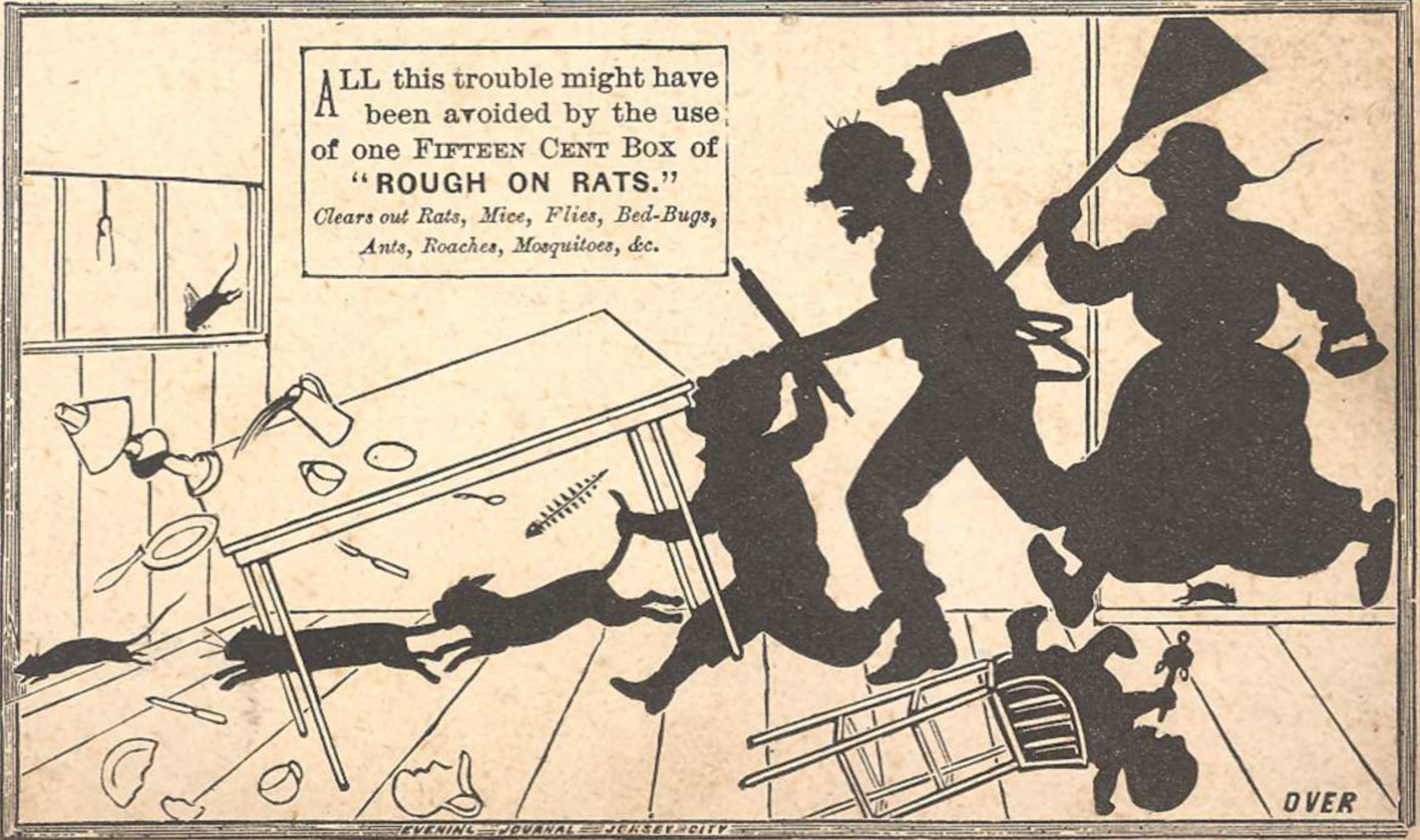
This week's visitor to the Hagley Vault is the E.S. Wells Medical Company, which produced this ca. 1890 advertising card for it's "Rough on Rats" pesticide. The New Jersey firm manufactured a strange combination of products: medicines for the general public, as well as rat poison.
The company's founder, Ephraim S. Wells (1841-1913) began his career apprenticing to a druggist in West Virginia before moving to New Jersey in 1862. There, he worked for a time in L.B. Bowie's Drug Store in Uniontown before purchasing two drugstores in Jersey City and, eventually, a manufacturing plant for his remedies.
Wells' most popular products, which were marketed nationwide, included Worm Syrup, Rough on Corns, Rough on Toothaches, and Rough on Rats. Wells claimed that his Worm Syrup treated feverishness (in humans, not in rats), restlessness, and constipation, and would expel worms from the body. It was described in advertising as "sweet and nice".
Rough on Rats promised to rid your house of rats, mice, roaches, flies, beetles, moths, ants, skunks, weasels, gophers, moles, and muskrats. Rough on Rats was marketed with a running series of lurid advertising cards as well as a promotional song whose chorus featured the line "R-r-rats! Rats! Rats! Rough on Rats!/Hang your dog and drown your cats!". Alternate versions of this particular advertisement also came with a short, first-person narrative to accompany this image from the perspective of the family patriarch, now "imprisoned and fined" for nearly murdering his wife and endangering the life of his infant child.
While this account was fictional, Rough on Rats did feature in a number of real life court cases. The product was nothing more than arsenic, and was cited as the cause of death in a number of murder trials across the nation throughout the 1890s and early 20th century. The most famous case concerned the September 27, 1935 death of Ada Appelgate by her husband Everett and Mary Frances Creighton, the mother of Everett's mistress. When it was discovered the Creighton's brother and mother-in-law had also recently and mysteriously died of arsenic poisoning, with Mary Frances as the prime suspect, the press dubbed her "The Long Island Borgia", and the sordid story became popular tabloid fodder.
This item is part of Hagley Library's Fingerman collection of ephemera (Accession 2009.213). Assembled by collectors Arlene and Gerald Fingerman, the collection consists of mixed-format ephemera from various endeavors within American culture, primarily the manufacturing and selling of products or services. The collection has not been digitized in its entirety, but you can view a selection of materials from the collection now in our Digital Archive - just click here!
- ‹ Previous
- Random
- Next ›

